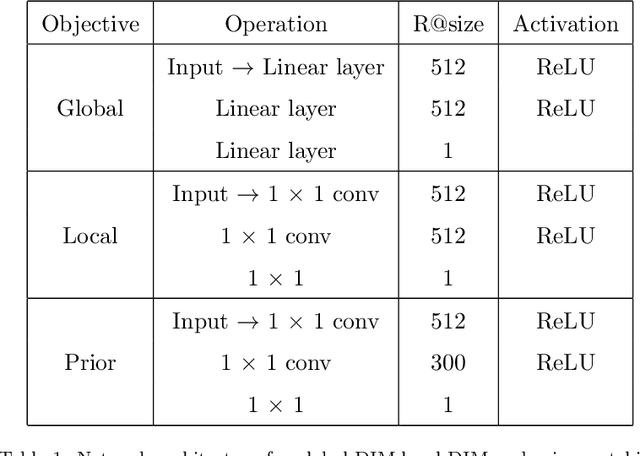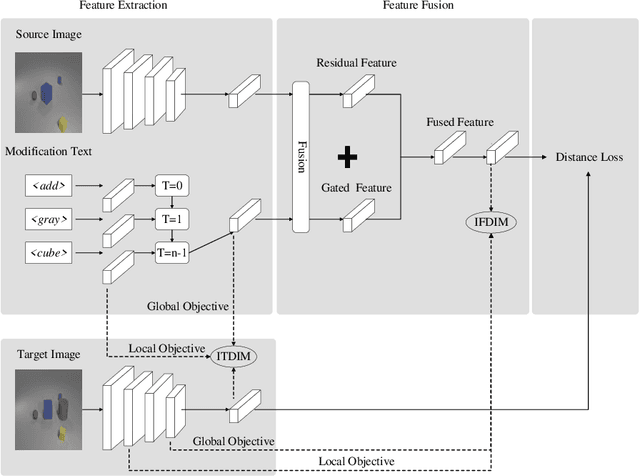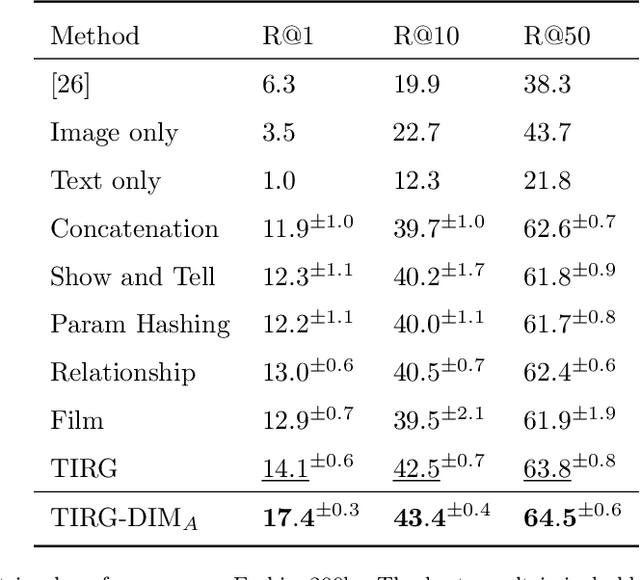Xixi Zhou
Zhejiang University
Cross-modal Image Retrieval with Deep Mutual Information Maximization
Mar 10, 2021



Abstract:In this paper, we study the cross-modal image retrieval, where the inputs contain a source image plus some text that describes certain modifications to this image and the desired image. Prior work usually uses a three-stage strategy to tackle this task: 1) extract the features of the inputs; 2) fuse the feature of the source image and its modified text to obtain fusion feature; 3) learn a similarity metric between the desired image and the source image + modified text by using deep metric learning. Since classical image/text encoders can learn the useful representation and common pair-based loss functions of distance metric learning are enough for cross-modal retrieval, people usually improve retrieval accuracy by designing new fusion networks. However, these methods do not successfully handle the modality gap caused by the inconsistent distribution and representation of the features of different modalities, which greatly influences the feature fusion and similarity learning. To alleviate this problem, we adopt the contrastive self-supervised learning method Deep InforMax (DIM) to our approach to bridge this gap by enhancing the dependence between the text, the image, and their fusion. Specifically, our method narrows the modality gap between the text modality and the image modality by maximizing mutual information between their not exactly semantically identical representation. Moreover, we seek an effective common subspace for the semantically same fusion feature and desired image's feature by utilizing Deep InforMax between the low-level layer of the image encoder and the high-level layer of the fusion network. Extensive experiments on three large-scale benchmark datasets show that we have bridged the modality gap between different modalities and achieve state-of-the-art retrieval performance.
Matching Text with Deep Mutual Information Estimation
Mar 09, 2020



Abstract:Text matching is a core natural language processing research problem. How to retain sufficient information on both content and structure information is one important challenge. In this paper, we present a neural approach for general-purpose text matching with deep mutual information estimation incorporated. Our approach, Text matching with Deep Info Max (TIM), is integrated with a procedure of unsupervised learning of representations by maximizing the mutual information between text matching neural network's input and output. We use both global and local mutual information to learn text representations. We evaluate our text matching approach on several tasks including natural language inference, paraphrase identification, and answer selection. Compared to the state-of-the-art approaches, the experiments show that our method integrated with mutual information estimation learns better text representation and achieves better experimental results of text matching tasks without exploiting pretraining on external data.
 Add to Chrome
Add to Chrome Add to Firefox
Add to Firefox Add to Edge
Add to Edge